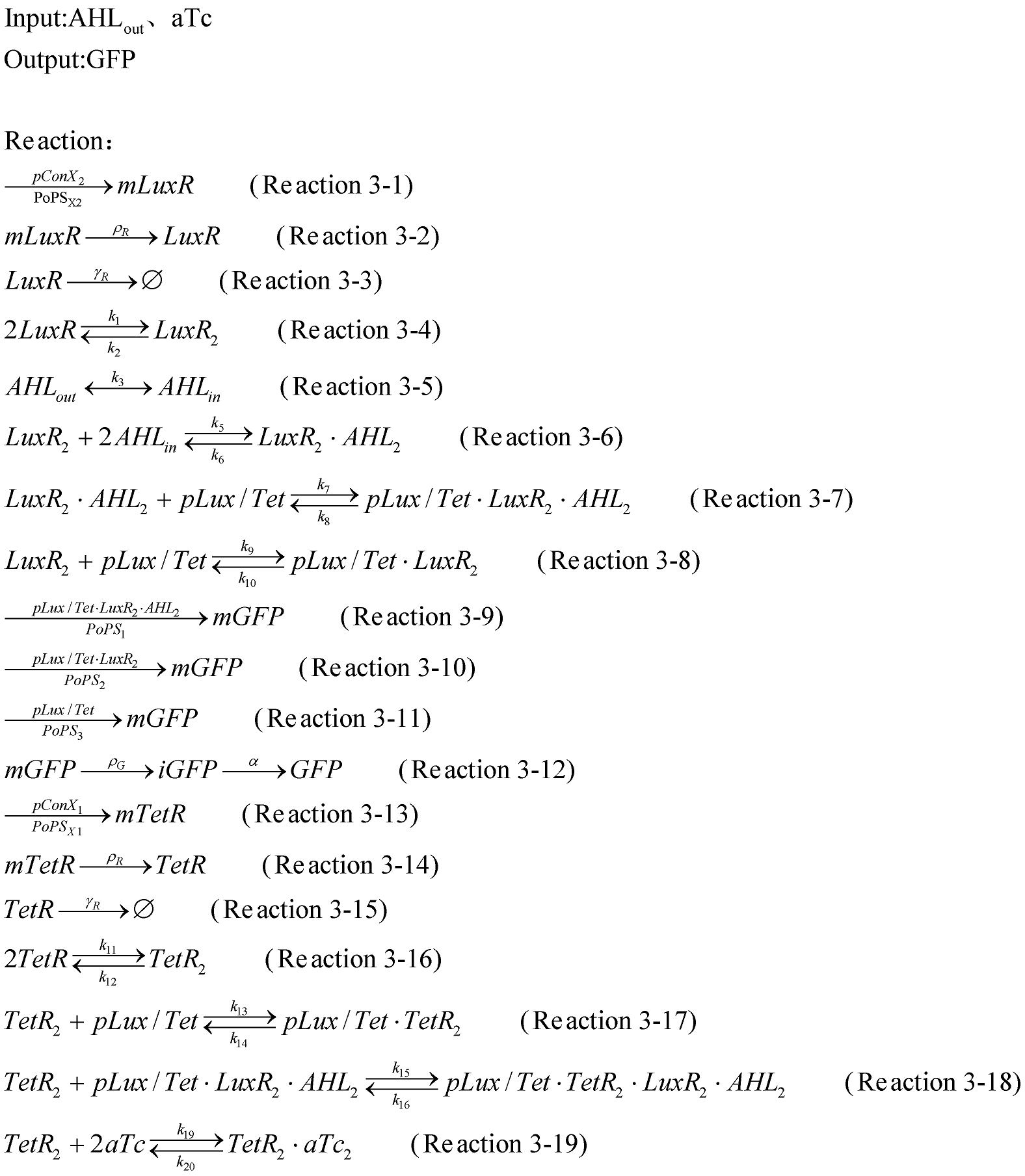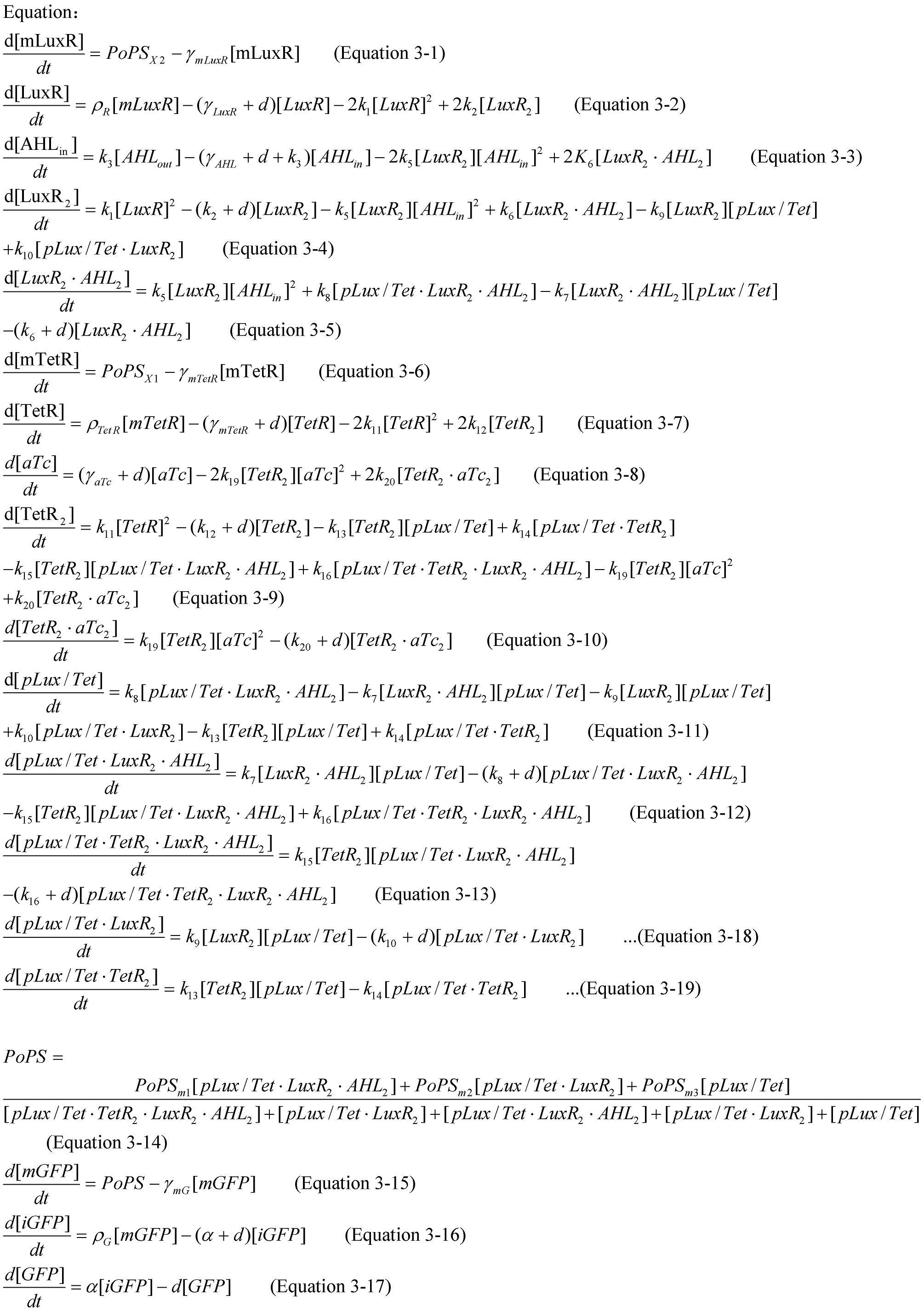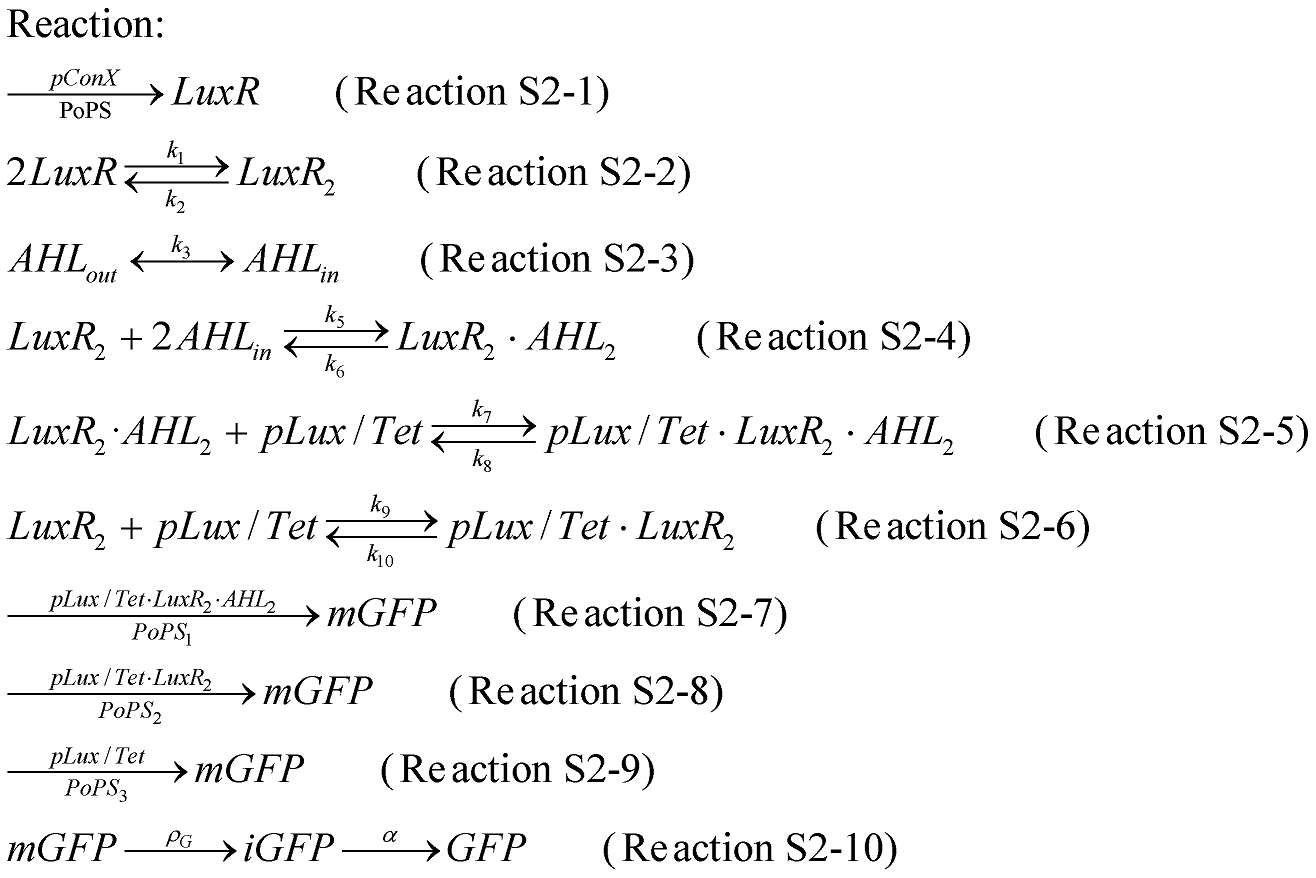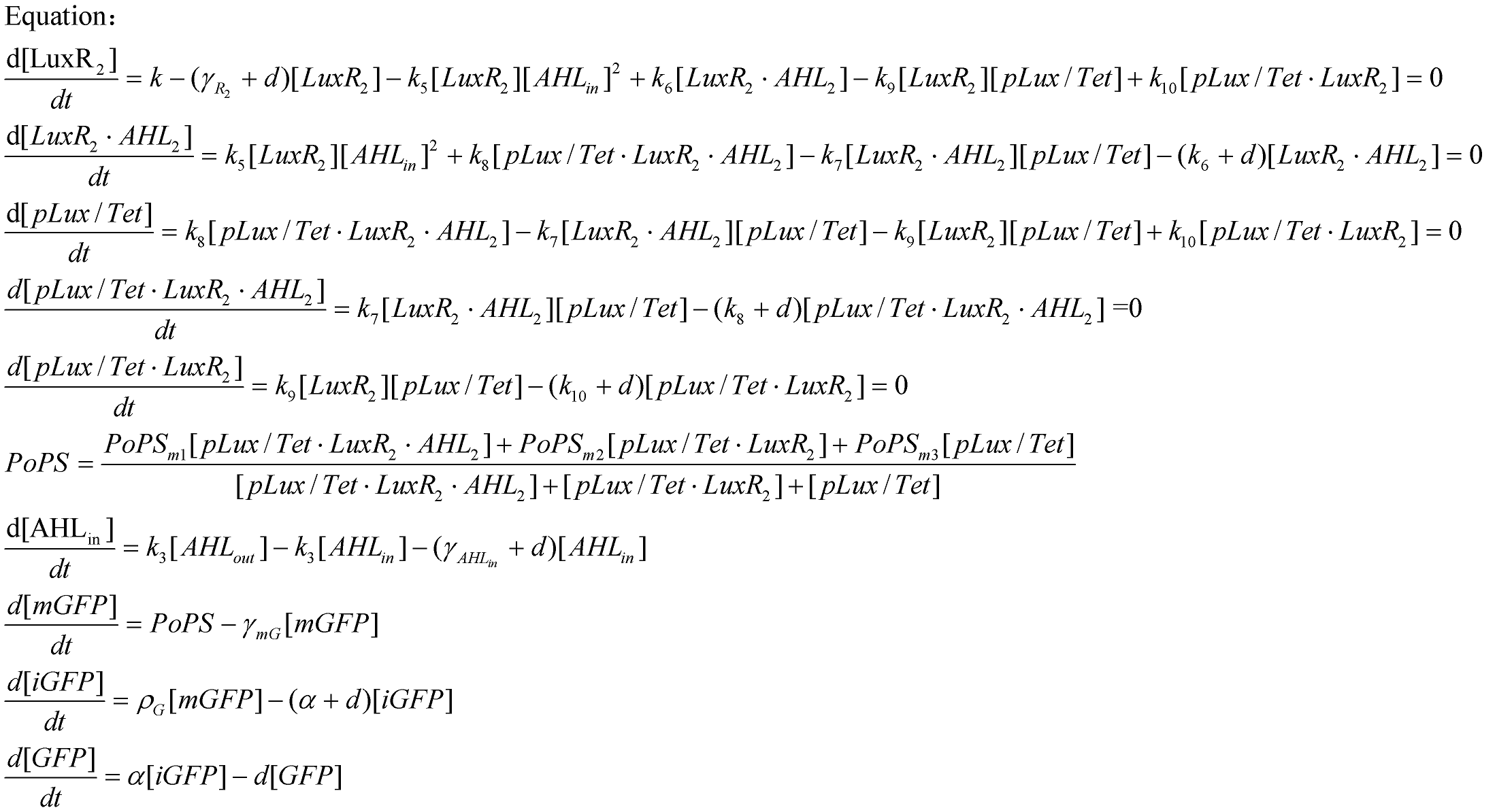Team:USTC/Modeling/Model-3
From 2009.igem.org
(Difference between revisions)
| Line 8: | Line 8: | ||
[[Image:model-3-2.jpg|800px]] | [[Image:model-3-2.jpg|800px]] | ||
| + | |||
| + | == '''Simplified Model-3''' == | ||
| + | We employed an ODE model. We defined the input to be AHL<sub>out</sub> the and the output to be the synthesis rate of mature GFP. | ||
| + | |||
| + | [[Image:s-m-2-1.jpg|550px]] | ||
| + | |||
| + | The modeling is similar to the [[Team:USTC/Modeling/Model-2|'''Simplified Model-2]] | ||
| + | To simplify the model, the (Recation S2-4), (Recation S2-5) and (Recation S2-4) were considered to be able to get balance in a very shortly time. | ||
| + | |||
| + | The values of 4.8E-3 for rmG, 4.8E-3 for a and 0.4 for pG were got from the F2620, and the value for d of 0.00368 based on the measurement of the OD. | ||
| + | |||
| + | [[Image:s-m-2-2.jpg|900px]] | ||
Revision as of 07:42, 21 October 2009
| Home | Team | Project | Modeling | Parts | Standard & Protocol | Software Tool | Human Practice | Notebook |
|---|
Team:USTC/Modeling/Model-3
Contents |
pConX1+tetR+pConX2+LuxR+pLux/Tet+GFP
Parts: K176066 K176067 K176070 K176071 K176074 K176075 K176078 K176079 K176136 K176138 K176140 K176142 K176144 K176176 K176178 K176180 K176182 K176184
Simplified Model-3
We employed an ODE model. We defined the input to be AHLout the and the output to be the synthesis rate of mature GFP.
The modeling is similar to the Simplified Model-2 To simplify the model, the (Recation S2-4), (Recation S2-5) and (Recation S2-4) were considered to be able to get balance in a very shortly time.
The values of 4.8E-3 for rmG, 4.8E-3 for a and 0.4 for pG were got from the F2620, and the value for d of 0.00368 based on the measurement of the OD.
 "
"




